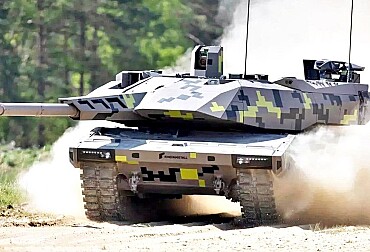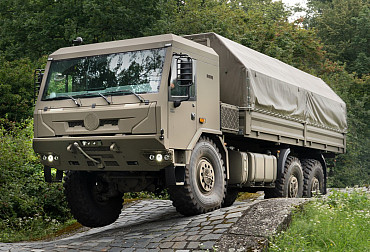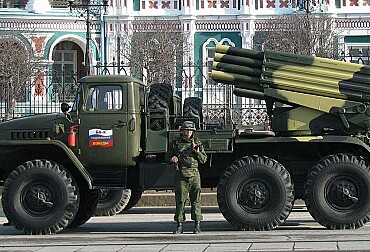Escalating losses of Western military equipment in Ukraine: The destruction of the M109 Paladin howitzer
The Russian military recently released another video showcasing the destruction of an American M109 Paladin self-propelled howitzer, purportedly targeted by a Lancet UAV. This incident underscores the mounting challenge the Ukrainian military faces as their limited stock of Western equipment dwindles under the relentless assault of Russian forces, which continue to deploy vast reserves of Soviet-era machinery.
On March 11, social media platform X featured footage suggesting the obliteration of another M109 Paladin. The video comprises three different segments: initially focusing on the howitzer positioned amidst a landscape, followed by what appears to be drone-captured footage heading towards the howitzer's turret, and finally, a distant view capturing a high-speed object colliding and exploding upon impact with the turret.
🇷🇺 💥 🇺🇦🇺🇸
— FactFactoryX (@FactFactor2023) March 11, 2024
Group of troops "Dnepr" destroyed another American-made Paladin self-propelled gun in Kherson direction.#Russia #NATO #USA #EU #Ukraine #UkraineRussiaWar #StandWithRussia pic.twitter.com/yHDOvwH66u
The strike, reportedly from the left at the howitzer's vulnerable upper section between the turret and chassis, is attributed to a Lancet drone attack. Produced exclusively for the Russian military by ZALA Aero Group, the Lancet is not meant for export. Designed for both reconnaissance and kamikaze missions, its price hovers around $35,000. Having undergone testing during Russia's incursion into Syria, the Lancet, alongside the Goran-2 UAV, plays a prominent role on the Ukrainian front.
Lancet drones can operate up to 40 km from the operator, equipped with optoelectronic guidance. Enhanced models reach speeds up to 300 km/h. While Russian sources are vague on the payload, some reports suggest a 3 kg warhead in its fragmentation head. The successful deployment against the Paladin signifies the advanced UAV capabilities Russia possesses, paralleling those of Ukraine.
The Paladin's distinct turret shape in the footage aligns with its known design, featuring an RHA armor range of 13 to 19 mm, resistant to small arms and shrapnel but vulnerable to anti-tank munitions. Delivered to Ukraine as part of international military aid, around 155 units from Lithuania, Norway, and Italy, along with at least 18 from the U.S., were operational by May 2023, as per Militarnyi. The exact numbers are elusive, but Oryx's data suggests 39 destroyed and 16 damaged Paladins on the Ukrainian front.

Russian sources claim over 80 Paladins destroyed between September 2023 and January 2024, a figure that remains unverified. The Paladin is just one among many Western machines facing destruction in Ukraine, including M2A2 Bradley IFVs, M113s, Dutch YPR-765s, M1114 and M1151 light armored vehicles, M777A2 and AHS Krab howitzers, and various smaller military tech and radars.
The issue extends beyond destruction; even minor damages often render Western equipment inoperable due to a lack of spare parts in Ukraine, exacerbating the challenge. Meanwhile, Russia seems to have a vast reserve of Soviet machinery at its disposal, showing no restraint in its deployment on the Ukrainian front, even repurposing equipment like the RBU-6000 anti-submarine launcher for land warfare, reflecting the dynamic and unpredictable nature of the conflict.









